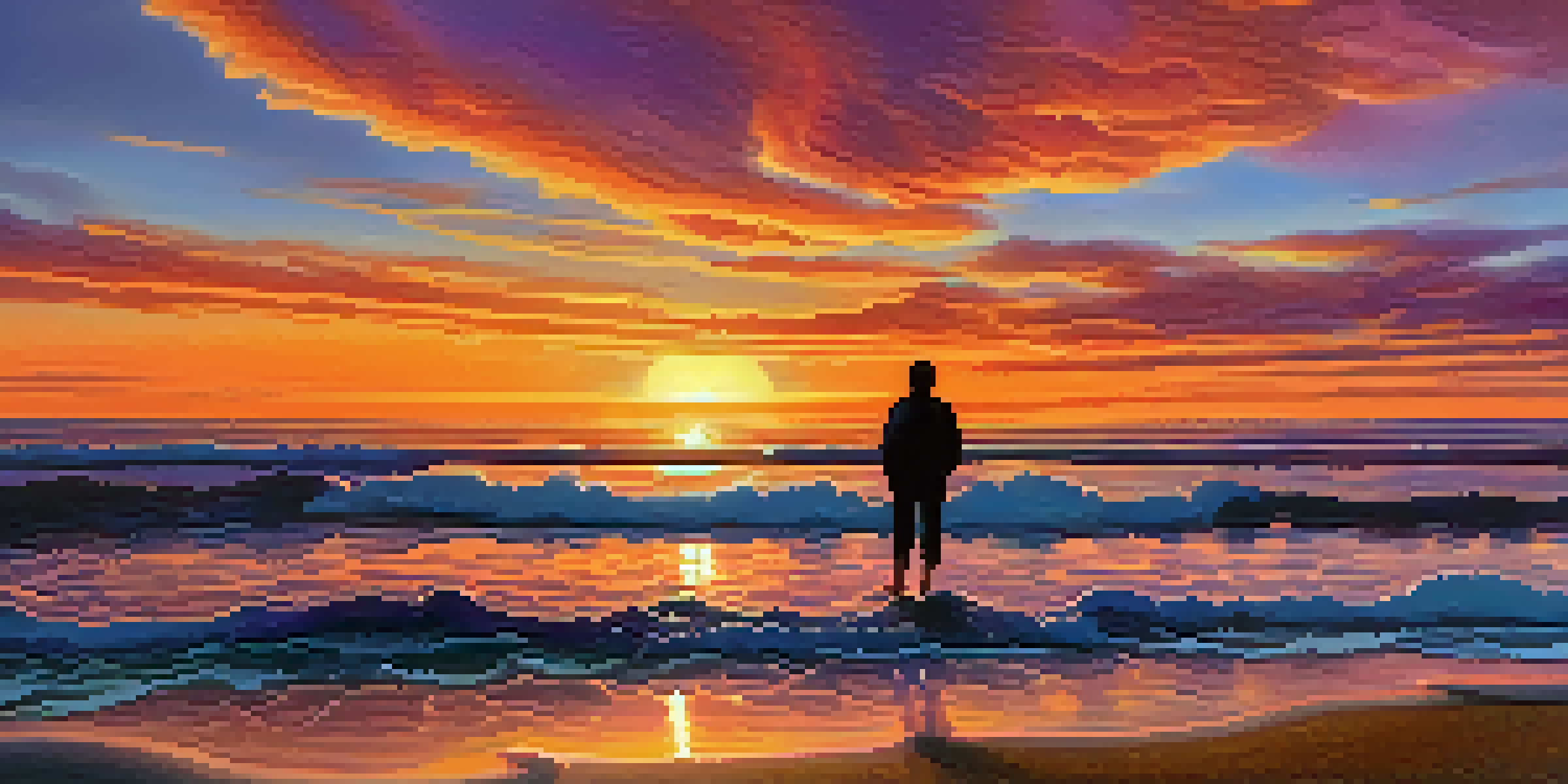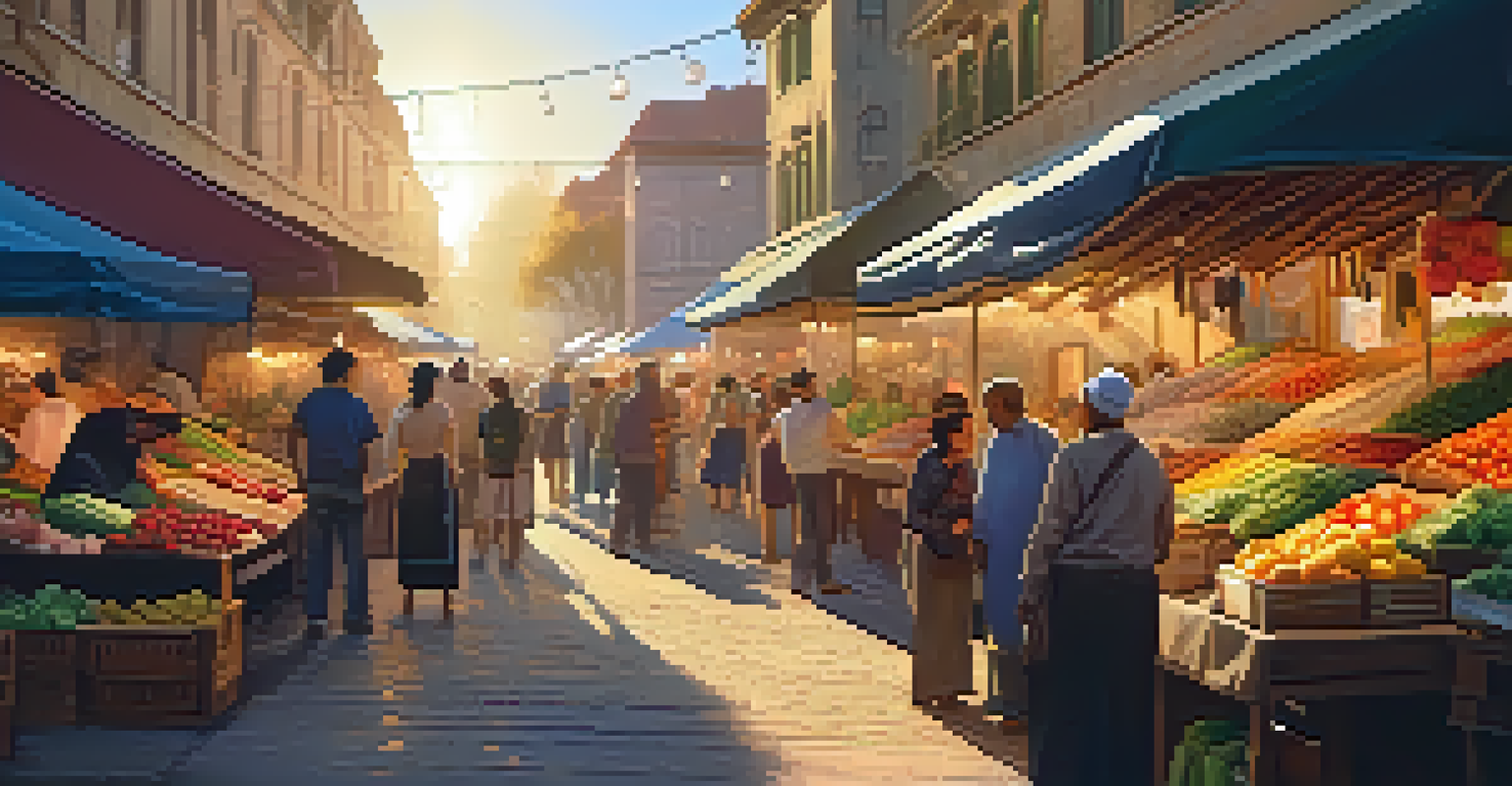Understanding Lighting: Key to Great Travel Photography

Why Lighting is Crucial for Travel Photography
Lighting can make or break your travel photos, acting like the secret sauce to delicious dishes. Whether you’re capturing a breathtaking sunset or a bustling market, the quality and direction of light will significantly affect the mood and clarity of your shots. Good lighting enhances colors, adds depth, and highlights details, creating images that resonate with viewers.
Photography is the story I fail to put into words.
Think of lighting as the storyteller of your photograph; it sets the tone and atmosphere. For instance, soft, diffused light during golden hour can evoke a sense of calm, while harsh midday sun might create stark shadows and high contrast. Understanding how to manipulate light allows you to convey different emotions through your travel photos.
Moreover, mastering lighting can elevate your travel photography skills from amateur to professional. The difference between a snapshot and a stunning photograph often lies in the light. By paying attention to your surroundings and adapting to the lighting conditions, you can capture moments that tell richer stories.
Types of Natural Light and Their Effects
Natural light comes in various forms, each with unique characteristics that affect your photos. The three main types are harsh light, soft light, and diffused light. Harsh light, typically found during midday, can create strong shadows, while soft light, such as during the golden hour, produces a gentle glow that flatters subjects and landscapes alike.

Then there's diffused light, which happens on overcast days or when sunlight filters through trees. This type of light minimizes shadows and is perfect for portraits, as it creates an even exposure across the face. Understanding these types helps you choose the right moments to shoot, enhancing the quality of your travel photography.
Lighting Shapes Travel Photography
The quality and direction of light are essential in enhancing the mood, colors, and clarity of your travel photos.
Consider the impact of these lighting types on your subject. For example, photographing a vibrant market scene under soft light can bring out the vivid colors of the stalls, while the same scene in harsh light may wash out those hues. By knowing how to harness different types of light, you can achieve the desired effect for your travel stories.
The Golden Hour: Magic for Photographers
The golden hour, which occurs shortly after sunrise and before sunset, is a photographer's dream. During this time, the sun is low in the sky, casting a warm, golden hue that enhances colors and creates long shadows. This magical light not only makes landscapes pop but also creates a beautiful soft glow around subjects.
The best camera is the one you have with you.
For travelers, timing your shoots to coincide with the golden hour can dramatically improve your photography. Imagine capturing the sun setting over the ocean, where the sky is painted in hues of orange and pink, reflecting on the water. These moments are fleeting, so planning your outings around this time can lead to breathtaking results.
Embrace the golden hour as your best ally in travel photography. It requires a bit of patience and planning, but the payoff is worth it. When you become attuned to this magical time, you’ll find it easier to create stunning images that evoke emotions and memories long after your travels.
Understanding Directional Light for Impactful Shots
The direction of light plays a crucial role in how your subject appears in photographs. Front lighting illuminates the subject evenly, making it a safe choice but sometimes lacking drama. Side lighting, on the other hand, creates depth by emphasizing textures and contours, ideal for landscapes and architectural shots.
Backlighting can be tricky but rewarding; it silhouettes your subject against a bright background, creating striking images. For example, capturing a traveler against a sunset can produce a powerful emotional impact. Experimenting with different lighting angles can help you discover the most compelling way to portray your subject.
Golden Hour is Photographer's Gem
Timing your shoots during the golden hour can dramatically improve the quality and emotional impact of your images.
By understanding how to manipulate directional light, you can enhance storytelling in your travel photography. Whether you want to highlight details, create mood, or evoke emotions, the right light direction is your best friend. So, don't be afraid to move around and find the angle that best captures the essence of your moment.
Using Artificial Light to Enhance Photography
While natural light is essential, artificial light can play a significant role in travel photography, especially in low-light situations. From using a simple flashlight to more advanced equipment like speedlights or softboxes, artificial light can help illuminate your subject and create captivating images. Understanding how to use these tools effectively can expand your creative possibilities.
For instance, if you’re photographing a busy street market at night, a portable light source can help you capture the vibrant colors and intricate details that would otherwise be lost in darkness. By bouncing light off nearby surfaces, you can soften shadows and create a more flattering exposure.
Incorporating artificial light into your travel photography toolkit allows you to be flexible and creative, regardless of the time of day. Learning to balance artificial and natural light can lead to stunning results that tell a more comprehensive story about your travels.
Post-Processing: Enhancing Light in Your Photos
Even the best photographers rely on post-processing to fine-tune their images. Software like Adobe Lightroom or Photoshop allows you to adjust exposure, contrast, and color balance, enhancing the overall lighting in your photographs. This step is crucial for achieving the look you envisioned during your shoot.
For instance, if you captured a breathtaking sunset but the colors aren't as vibrant as you remembered, post-processing can help you bring those hues back to life. Adjusting the highlights and shadows can add depth and dimension, ensuring your photos reflect the beauty you experienced.
Artificial Light Expands Creativity
Using artificial light effectively allows for creative photography in low-light situations, enhancing the storytelling aspect of your travels.
Remember, post-processing is not about altering the truth of your travels but enhancing the story you want to tell. With just a few adjustments, you can transform an already stunning photo into a visually captivating piece that draws viewers in.
Tips for Mastering Lighting in Travel Photography
Mastering lighting in travel photography requires practice and experimentation. Start by observing how light interacts with your surroundings throughout the day. Take note of how your favorite locations change in different lighting conditions, and use this understanding to plan your shoots accordingly. Remember, practice makes perfect!
Another tip is to carry a reflector or a simple white card with you. These tools can help redirect light onto your subject, especially in harsh conditions. Experimenting with reflectors can add a professional touch to your images, allowing you to manipulate light to your advantage.

Lastly, don't shy away from trying new techniques and styles. Whether it's shooting in silhouette, experimenting with shadows, or playing with reflections, being open to new ideas will expand your creative horizons. With time and practice, you’ll develop an intuitive understanding of lighting that elevates your travel photography.